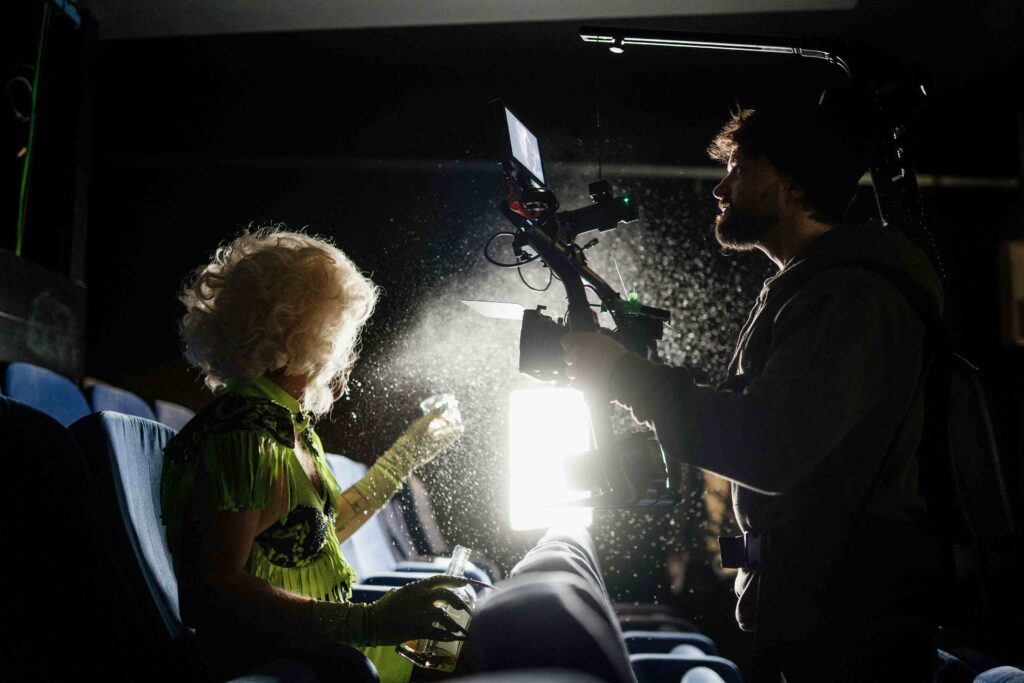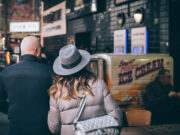The creative industry is undergoing a monumental shift, thanks to the rapid rise of Generative Artificial Intelligence (Generative AI). Once limited to science fiction, AI-driven creativity is now a reality, fundamentally transforming how we design, illustrate, and conceptualize art. At the center of this revolution lies a new and exciting role — the AI Art Director.
Traditionally, art directors were responsible for leading creative teams, setting visual styles, and ensuring that branding and storytelling aligned with client or company goals. However, as tools like MidJourney, DALL·E 3, Stable Diffusion, Adobe Firefly, and Runway ML gain traction, the creative process itself has evolved. Now, an AI Art Director must not only think like an artist but also understand machine learning models, prompt engineering, and ethical considerations.
The demand for professionals who can bridge the gap between human creativity and AI-driven innovation is skyrocketing. According to reports by PwC and McKinsey, the global creative AI industry is expected to reach $98 billion by 2030, creating thousands of specialized roles worldwide. Companies in gaming, advertising, entertainment, architecture, and even fashion are seeking AI-savvy creatives who can deliver cutting-edge visuals at scale.
Why this matters now:
In the coming decade, every major creative project will likely involve AI at some stage. Those who can direct this collaboration between human imagination and algorithmic power will be at the forefront of a multi-billion-dollar creative economy.
This guide dives deep into what it takes to become an AI Art Director, the emerging job opportunities in the generative AI space, and how you can prepare to thrive in this rapidly evolving career landscape.
Table of Contents
Understanding Generative AI
To become an effective AI Art Director, you must first understand the foundation of generative AI technologies. These are not just tools — they are complex systems that mimic and expand upon human creativity.
2.1 What is Generative AI?
Generative AI refers to machine learning models capable of generating new data, such as images, videos, text, or even music. Unlike traditional AI, which focuses on pattern recognition and decision-making, generative AI actively creates original content.
Examples include:
- AI-generated digital paintings
- Synthetic movie storyboards
- Virtual fashion designs
- Music compositions made entirely by algorithms
- Video game levels and assets created in real-time
In the context of creative industries, generative AI has unlocked a new realm of possibilities. For instance:
- MidJourney creates detailed illustrations and conceptual art in seconds.
- DALL·E 3 produces realistic marketing visuals based on text prompts.
- Runway ML powers AI-driven video production for filmmakers.
- Stable Diffusion allows open-source, customizable art generation.
2.2 Types of Generative AI Models
Understanding the core technologies behind generative AI helps you make informed creative decisions. Here are the most common types:
| Type of Model | Primary Function | Use Case in Creative Fields |
|---|---|---|
| GANs (Generative Adversarial Networks) | Create hyper-realistic images by pitting two networks against each other. | Photorealistic character design, fashion concepts |
| Diffusion Models | Generate high-quality images through noise reduction and refinement. | Illustration, advertising, animation |
| LLMs (Large Language Models) | Generate and process text-based content. | Scriptwriting, storytelling, marketing copy |
| Multimodal AI | Combine text, images, and audio generation. | Interactive experiences, game design |
| Neural Radiance Fields (NeRFs) | Create 3D spaces and immersive environments. | Virtual reality, architectural visualization |
2.3 Real-World Applications of Generative AI in Art
Generative AI isn’t limited to digital art galleries — it’s being used across industries.
| Industry | Application | Example Tool |
|---|---|---|
| Gaming | Generate game characters, worlds, and assets. | Unity AI, MidJourney |
| Advertising | Create ad visuals tailored to specific audiences. | DALL·E 3, Adobe Firefly |
| Fashion | Design and simulate new clothing collections virtually. | Runway ML, Fashwell |
| Architecture | Visualize building designs in 3D with AI-generated details. | Stable Diffusion, NeRFs |
| Film & Animation | AI-assisted storyboarding and animation. | Runway ML, Kaiber AI |
| Education | Immersive learning experiences using AI visuals. | AR/VR with AI integration |
2.4 Why Generative AI Matters for Creative Roles
The rise of generative AI isn’t just about replacing manual work — it’s about augmenting human creativity. Here’s why it matters:
- Speed and Efficiency
Tasks that once took weeks, like creating 3D assets or conceptual designs, can now be completed in hours or even minutes. - Cost Reduction
Smaller teams can now compete with large studios by leveraging AI-driven workflows. - Infinite Creativity
AI can generate variations of designs endlessly, giving creatives more options to refine their vision. - Accessibility
Anyone with an internet connection and a creative vision can now produce professional-level visuals. - Collaboration Between Humans and Machines
The future of design lies in hybrid teams where humans provide direction and AI handles execution.
The AI Art Director’s Unique Perspective
Unlike traditional art directors, an AI Art Director doesn’t just oversee human creatives — they also direct algorithms and models. This requires a unique blend of skills:
- Creative Vision: Understanding aesthetics, storytelling, and brand identity.
- Technical Proficiency: Familiarity with AI tools, prompt engineering, and datasets.
- Ethical Judgment: Navigating copyright issues, bias mitigation, and responsible AI usage.
- Strategic Thinking: Leveraging AI for business growth and innovation.
The Role of an AI Art Director
The AI Art Director is more than just a creative professional; they are the bridge between human creativity and machine intelligence. This role blends art, technology, and strategic thinking to shape visual storytelling in industries being transformed by AI.
3.1 Definition of an AI Art Director
An AI Art Director is responsible for:
- Guiding the creative direction of AI-generated content.
- Designing visual strategies that align with a brand or project.
- Using generative AI tools to execute concepts quickly and efficiently.
- Ensuring the final outputs are ethical, culturally sensitive, and legally compliant.
In essence, they manage both human teams and algorithms.
3.2 Core Responsibilities
| Responsibility | Description | AI Tool/Platform Example |
|---|---|---|
| Creative Visioning | Setting the overall look and feel of projects, from concept to execution. | MidJourney, Adobe Firefly |
| Prompt Engineering | Crafting precise AI prompts to achieve desired visual results. | DALL·E 3, Stable Diffusion |
| Workflow Optimization | Integrating AI into existing design pipelines for efficiency. | Runway ML, Figma with AI plugins |
| Ethical Oversight | Ensuring AI outputs avoid copyright infringement or bias. | Content moderation systems |
| Team Collaboration | Coordinating between designers, data scientists, and clients. | Slack, Asana, Trello |
| Trend Analysis | Staying up-to-date with emerging AI technologies and visual trends. | Pinterest, Behance, Dribbble |
| Training AI Models | Working with developers to fine-tune datasets for brand-specific outputs. | Custom Stable Diffusion models |
3.3 Key Skills Required
The AI Art Director role requires multi-disciplinary expertise. Here’s a skill breakdown:
| Skill Category | Specific Skills | Importance Level |
|---|---|---|
| Creative & Design | Art direction, storytelling, color theory, branding | ⭐⭐⭐⭐⭐ |
| Technical | AI tools, prompt engineering, Python basics, dataset curation | ⭐⭐⭐⭐ |
| Ethics & Compliance | Copyright law, bias detection, AI regulation awareness | ⭐⭐⭐⭐ |
| Project Management | Team leadership, agile methodologies, client communication | ⭐⭐⭐⭐ |
| Business Strategy | Market analysis, monetization strategies, scaling creative operations | ⭐⭐⭐ |
Tip: Start with creative mastery, then gradually build technical and ethical knowledge to become a full-fledged AI Art Director.
Section 4: Career Opportunities in Generative AI
The field of generative AI is expanding rapidly, offering diverse roles beyond the traditional art director position. Many of these roles are emerging as businesses integrate AI into their creative processes.
4.1 Top Career Paths in AI-Driven Creativity
| Job Role | Primary Focus | Average Salary (USD/year) | Required Expertise |
|---|---|---|---|
| AI Art Director | Leading AI-powered visual projects | $85,000 – $150,000 | Creative leadership + AI tool mastery |
| Prompt Engineer | Writing advanced prompts for AI tools | $70,000 – $120,000 | Language skills + design sensibilities |
| Generative AI Designer | Creating original visuals using AI | $60,000 – $100,000 | Art fundamentals + MidJourney/DALL·E skills |
| Creative Technologist | Building AI-driven design workflows | $90,000 – $140,000 | Coding + visual design |
| AI Ethics Specialist | Monitoring AI content for ethical compliance | $75,000 – $130,000 | Legal + data ethics |
| VR/AR Creative Director | Designing immersive experiences with AI | $95,000 – $160,000 | XR design + generative AI tools |
| AI Dataset Curator | Organizing datasets for custom AI models | $55,000 – $90,000 | Metadata, tagging, copyright laws |
4.2 Emerging Industries for AI Art Directors
Generative AI isn’t limited to one sector — it’s reshaping multiple industries:
| Industry | Example AI Applications |
|---|---|
| Gaming | AI-generated environments, NPCs, and storyline visuals. |
| Film & Animation | AI-assisted editing, special effects, and storyboarding. |
| Fashion | Virtual runway shows and digital fashion collections. |
| Advertising | Tailored ad creatives generated at scale. |
| Architecture | AI visualizations of proposed building designs. |
| Education | Interactive learning tools and immersive virtual classrooms. |
| Healthcare | Patient education visuals, medical simulation environments. |
4.3 Example Day-in-the-Life of an AI Art Director
| Time | Task | Tool Used |
|---|---|---|
| 9:00 AM | Review AI-generated concepts for client pitch. | MidJourney, Runway ML |
| 11:00 AM | Meet with team to discuss prompt strategy. | Slack, Figma AI Plugin |
| 1:00 PM | Ethical compliance review of generated content. | Legal AI Review System |
| 3:00 PM | Refine branding assets using Stable Diffusion. | Stable Diffusion |
| 5:00 PM | Document workflow improvements. | Notion, Asana |
| 6:00 PM | Explore latest AI creative trends. | Behance, Pinterest AI feeds |
4.4 Skills vs. Salary Correlation
| Skill Level | Average Salary Range (USD/year) |
|---|---|
| Beginner (0–2 years) | $50,000 – $70,000 |
| Intermediate (2–5 years) | $70,000 – $100,000 |
| Advanced (5+ years) | $100,000 – $150,000+ |
Insight:
As AI adoption grows, even entry-level positions are becoming more lucrative, especially for those who combine design and technical skills.
Section 5: Building Your Career as an AI Art Director
To succeed in this role, you need a strategic roadmap. Below is a step-by-step guide.
5.1 Step 1: Strengthen Your Design Fundamentals
Even with advanced AI tools, artistic foundations remain vital:
- Color theory
- Typography
- Composition
- Visual storytelling
Example: Take courses on Skillshare, Coursera, or Domestika to enhance your visual skills.
5.2 Step 2: Master AI Tools
Learn to use leading generative AI tools effectively:
- MidJourney – Conceptual art and high-quality visuals
- DALL·E 3 – Marketing assets and illustrations
- Runway ML – AI-powered video editing
- Stable Diffusion – Custom models for specific styles
- Adobe Firefly – Branding and professional design workflows
5.3 Step 3: Develop Prompt Engineering Expertise
Prompt engineering is the core skill for directing AI outputs.
Example prompt for a cyberpunk cityscape:
“Ultra-detailed cyberpunk city skyline at dusk, neon lights glowing, flying cars, cinematic atmosphere, inspired by Blade Runner, 8K resolution.”
The quality of the prompt determines the quality of the result.

5.4 Step 4: Build a Strong Portfolio
Your portfolio should include:
- AI-generated projects
- Case studies explaining your workflow
- Ethical and bias-free content examples
- Before-and-after comparisons showcasing AI enhancement
Section 6: Ethical Considerations in AI Art Direction
With the rise of AI-generated content, ethical challenges have become a central concern. As an AI Art Director, you must ensure that your work is legally sound, culturally respectful, and transparent. Failing to address these concerns can damage your reputation and even lead to legal consequences.
6.1 Common Ethical Issues
| Ethical Concern | Description | Real-World Example |
|---|---|---|
| Copyright Infringement | AI models trained on copyrighted images may generate similar outputs. | AI art resembling Disney characters. |
| Bias and Stereotyping | AI can unintentionally perpetuate stereotypes if the training data is biased. | Gender-biased job role visuals. |
| Deepfakes & Misinformation | Creating misleading content using AI-generated visuals. | AI-generated fake political ads. |
| Transparency | Failing to disclose that content is AI-generated. | Misleading advertising campaigns. |
| Data Privacy | Using private images without consent in training datasets. | Unauthorized celebrity likenesses. |
6.2 Legal Compliance Framework
AI regulations are evolving globally. As an AI Art Director, you must stay updated on relevant laws.
| Region | Regulation/Act | Key Focus Area |
|---|---|---|
| United States | AI Bill of Rights (Proposed) | Ethical AI use and transparency. |
| European Union | EU AI Act | High-risk AI system compliance. |
| India | Digital Personal Data Protection Act, 2023 | Data privacy and ethical AI. |
| Global | UNESCO Guidelines for AI Ethics | Universal ethical standards. |
Tip: Work with legal advisors to ensure compliance when creating commercial AI content.
6.3 Best Practices for Ethical AI Art Direction
- Disclose AI Use:
Always mention when AI tools were part of the creative process. - Avoid Plagiarism:
Use original datasets or open-source models with proper licenses. - Test for Bias:
Regularly review outputs for unintended stereotypes or offensive content. - Obtain Consent:
Get clear permission before using private images for training or outputs. - Stay Updated:
Follow AI-focused legal news and attend ethics webinars or workshops.
Section 7: Future Trends in Generative AI and Art Direction
The field of generative AI is rapidly evolving, and the next decade will bring massive transformations in creative industries. Here’s what you should watch for:
7.1 The Rise of Hybrid Creative Teams
- Human designers and AI systems will collaborate seamlessly.
- Example: An art director sets the vision, AI generates drafts, and human artists finalize details.
- Tools will integrate into standard creative software like Figma, Adobe Creative Suite, and Blender.
7.2 Personalization at Scale
- Brands will use AI to create personalized ad campaigns for millions of users simultaneously.
- Example: Netflix creating AI-tailored movie posters for each subscriber based on their preferences.
7.3 Growth of Immersive Environments
- AI will dominate the creation of VR/AR experiences, metaverse spaces, and 3D virtual assets.
- AI Art Directors will oversee fully virtual production studios.
7.4 Democratization of Creativity
- Low-cost or free AI tools will enable anyone to create professional-quality visuals.
- This will increase competition but also foster innovation.
7.5 Emerging Job Roles in the Next 5 Years
| Future Job Title | What They Do |
|---|---|
| AI Storyboard Designer | Creates dynamic, AI-generated film storyboards. |
| Synthetic Reality Specialist | Designs ultra-realistic virtual worlds for the metaverse. |
| Algorithmic Fashion Designer | Develops fashion trends using AI-generated concepts. |
| AI Content Auditor | Ensures AI outputs meet ethical and legal standards. |
| Creative AI Strategist | Builds business plans for AI-driven creative teams. |
Section 8: Comprehensive Career Roadmap
This step-by-step roadmap will help you transition into or advance within the AI Art Director role.
8.1 Step 1: Foundation Building (0–6 Months)
Goals:
- Learn basic design principles.
- Understand how AI works at a conceptual level.
Action Items:
- Take online courses on design fundamentals.
- Explore beginner AI tools like Canva AI and DALL·E.
- Start a visual journal documenting AI-generated experiments.
Recommended Platforms: Skillshare, Coursera, YouTube tutorials.
8.2 Step 2: Intermediate Skills (6–12 Months)
Goals:
- Master key AI creative tools.
- Build small portfolio projects.
Action Items:
- Practice prompt engineering with MidJourney.
- Create a mock branding campaign using Stable Diffusion.
- Learn basic coding for custom model integration (e.g., Python).
Pro Tip: Start freelancing on platforms like Fiverr or Upwork.
8.3 Step 3: Specialization (1–2 Years)
Goals:
- Develop expertise in a niche, such as gaming, advertising, or fashion.
Action Items:
- Build a niche-specific portfolio (e.g., fashion AI art).
- Attend industry events or online conferences.
- Begin collaborating with developers and data scientists.
8.4 Step 4: Leadership Preparation (2–3 Years)
Goals:
- Transition from creator to team leader.
Action Items:
- Learn project management tools like Asana or Notion.
- Mentor junior designers and prompt engineers.
- Develop ethical guidelines for your team.
8.5 Step 5: Become a Recognized Expert (3–5 Years)
Goals:
- Establish yourself as an industry thought leader.
Action Items:
- Publish blogs or tutorials about AI art direction.
- Speak at conferences or on podcasts.
- Build a personal brand via LinkedIn and Twitter.
Section 9: Tools and Resources for AI Art Directors
Here’s a curated list of tools to accelerate your workflow.
| Category | Tool | Purpose |
|---|---|---|
| Image Generation | MidJourney, DALL·E 3, Adobe Firefly | Creating visual assets. |
| Video Editing | Runway ML, Kaiber AI | AI-assisted video production. |
| Prompt Optimization | Promptomania, Lexica | Crafting advanced prompts. |
| 3D Modeling | Blender, Unity AI | Generating 3D environments. |
| Project Management | Notion, Asana, Trello | Team collaboration and workflow. |
| Ethics and Bias Check | Fairlearn, IBM AI Fairness 360 | Monitoring ethical standards. |
Advanced Creative Workflows for AI Art Directors
As generative AI tools mature, the role of an AI Art Director is evolving beyond concept supervision. It now involves building end-to-end workflows that merge AI technology with traditional creative processes. This requires a blend of technical expertise, artistic vision, and strong leadership skills.
In many organizations, the AI Art Director acts as the bridge between human designers and machine-driven creativity. By setting up structured workflows, they ensure that AI-generated art not only meets quality standards but also aligns with brand identity and storytelling goals.
Step 1: Ideation and Research
The process begins with deep research into target audiences, market trends, and cultural contexts. Unlike traditional creative teams that rely solely on brainstorming, AI-driven workflows leverage data.
For instance, AI can analyze global visual trends across social media platforms, identify emerging aesthetics, and generate mood boards within minutes. This allows the director to start with a data-backed creative vision, which reduces guesswork and improves efficiency.
The director then collaborates with writers, designers, and marketing strategists to craft a creative brief. This document acts as the foundation for all subsequent AI generation tasks.
Key questions to address at this stage include:
- What emotions should the visuals evoke?
- Which audience segment is being targeted?
- What narrative or brand message must remain consistent?
Step 2: Prompt Engineering and AI Setup
Prompt engineering is one of the most critical skills for an AI Art Director. Well-constructed prompts determine the quality and relevance of AI outputs.
Instead of simple instructions like “generate a fantasy landscape,” advanced prompts include:
- Detailed descriptions of style and lighting.
- References to specific art movements or historical periods.
- Defined rules for color palettes and composition.
By refining prompts through iterative testing, directors can achieve a signature look for the brand or project. Some directors maintain prompt libraries, which function as creative assets that can be reused or modified for different campaigns.
The AI Art Director also configures tool settings during this stage. For example, they may adjust model parameters in MidJourney or Stable Diffusion to favor realism over abstraction, or vice versa, depending on project needs.
Step 3: First Draft Generation
Once prompts are finalized, the team generates the initial outputs. These raw AI visuals are not final products but starting points. The role of the director here is to:
- Evaluate the generated visuals.
- Select promising iterations.
- Discard outputs that don’t meet artistic or technical standards.
This process mirrors a traditional photography shoot where hundreds of photos are taken but only a few make it to the final campaign.
An effective director uses AI’s speed to generate a vast pool of options, ensuring there’s room for experimentation without exhausting human resources.
Step 4: Human-AI Collaboration
While AI can produce stunning results, human intervention remains essential. Artists and designers refine AI-generated images by:
- Adjusting proportions and anatomy.
- Adding custom textures or hand-drawn details.
- Correcting AI-induced errors, such as distorted objects or inaccurate symbols.
This stage ensures the final visuals maintain a human touch, preventing them from feeling cold or generic.
The director’s role here is similar to that of a film editor — making sure all pieces fit together seamlessly.
Step 5: Feedback and Iteration
AI Art Directors must create feedback loops between teams. For example:
- Marketing teams provide data on how audiences respond to different visuals.
- Designers share insights on what worked and what didn’t during editing.
- The director refines prompts and workflows based on this feedback.
Over time, these iterations lead to progressively better AI outputs and a more efficient creative pipeline.
Integrating AI Art Direction into Business Strategy
Generative AI isn’t just a creative tool — it’s a business driver. Companies are now integrating AI art direction into their core strategies to achieve:
- Faster product launches.
- Reduced creative production costs.
- Increased customer engagement.
An AI Art Director plays a pivotal role in this integration by aligning artistic output with business objectives.
Brand Consistency
One of the biggest challenges in large organizations is maintaining consistent visual branding across platforms.
AI systems can be trained on a company’s design language, ensuring that every generated asset — from social media graphics to advertising visuals — adheres to brand guidelines.
The director supervises this process by:
- Defining brand rules for color, typography, and style.
- Training AI models with curated datasets.
- Reviewing outputs to ensure brand compliance.
Personalized Marketing Campaigns
Personalization is the future of marketing, and AI-generated visuals make it possible at scale.
For example, a global brand could generate unique ad creatives for individual regions, each tailored to local cultural preferences.
The AI Art Director ensures these personalized campaigns remain aligned with the company’s overall narrative while respecting cultural nuances.
Cost Efficiency and Scalability
Traditional design processes are time-consuming and expensive, especially for industries like gaming or film where hundreds of assets are required.
AI drastically reduces production timelines by generating thousands of concepts in hours rather than weeks.
This scalability enables companies to:
- Experiment with multiple campaign variations.
- Run A/B tests on visual elements.
- Pivot quickly based on market trends.
The director’s responsibility is to balance speed with quality, ensuring that rapid production doesn’t compromise artistic integrity.
Challenges Faced by AI Art Directors
While the opportunities are vast, the role also comes with unique challenges that require careful navigation.
Creative Authenticity
One common criticism of AI-generated art is that it lacks authenticity.
To counter this, directors must focus on storytelling and emotional depth. AI may provide the brushstrokes, but human intention gives meaning to the work.
Managing Expectations
Stakeholders often assume AI can instantly create perfect designs.
The director must educate teams about the iterative nature of AI workflows and set realistic timelines.
Ethical Dilemmas
Issues such as copyright infringement and bias are persistent concerns.
Directors must implement clear ethical guidelines and maintain transparency about AI’s role in the creative process.

Technical Barriers
AI tools are still evolving, and technical limitations can disrupt workflows.
For example, models may struggle with specific visual tasks like text rendering or accurate anatomy.
The director mitigates these risks by:
- Staying updated on tool advancements.
- Working closely with technical teams to customize models.
- Building backup plans for manual intervention when needed.
The Future of AI Art Direction
Looking ahead, AI Art Directors will move beyond overseeing static image generation.
Their scope will expand to include:
- Interactive storytelling: AI-driven narratives that adapt to audience choices in real-time.
- Virtual production studios: Where entire film sets exist within AI-powered environments.
- Cross-platform design ecosystems: Seamlessly integrating visual assets across games, films, apps, and AR/VR spaces.
As generative AI evolves, so will the definition of art itself. The director of the future will not only manage visuals but also curate experiences that blend technology and emotion.
Building a Sustainable Career in AI Art Direction
If you aspire to thrive in this field, here are key strategies for long-term success:
Continuous Learning
Generative AI technology changes rapidly.
Regularly update your skills by:
- Enrolling in advanced courses.
- Attending AI design conferences.
- Following AI research publications.
Networking
Join professional communities where AI creatives share knowledge and collaborate.
Examples include LinkedIn groups, Discord channels for MidJourney users, and forums dedicated to generative design.
Showcasing Your Work
Create a personal website or portfolio highlighting both AI-generated and human-refined projects.
Include detailed case studies explaining your creative process and the tools you used.
Thought Leadership
Establish yourself as an authority by:
- Writing blog posts about AI art trends.
- Speaking at webinars or conferences.
- Hosting online tutorials or workshops.
Thought leadership not only builds credibility but also opens doors to new opportunities.
Adaptability
The tools and platforms you use today may be obsolete tomorrow.
Stay flexible and open to adopting new methods, even if it means unlearning old workflows.
The Human Element in an AI-Driven World
While AI offers unprecedented speed and efficiency, it cannot replace human creativity and empathy.
The most successful AI Art Directors will be those who understand that technology is a tool, not a replacement for imagination.
The director’s true value lies in:
- Crafting stories that resonate emotionally.
- Bringing a human perspective to machine outputs.
- Ensuring that innovation serves people, not the other way around.
In this sense, the future of art direction is not about machines versus humans, but rather humans and machines working together to expand the boundaries of creativity.
Conclusion: Shaping the Next Creative Era
The rise of generative AI marks a turning point in the creative industry.
For aspiring AI Art Directors, this moment presents a rare opportunity to define a new profession. By mastering both the technical and artistic aspects of the role, you can lead teams into a future where creativity is limitless.
Whether you’re designing immersive virtual worlds, creating personalized marketing campaigns, or shaping the aesthetic identity of global brands, your work will have a profound impact on how people experience art in the digital age.
The challenge is not simply to manage AI tools but to guide them with vision and purpose. Those who rise to this challenge will become the architects of a new era in design — one where human creativity and artificial intelligence coexist in perfect harmony.
Follow us on Whatsapp channel

















